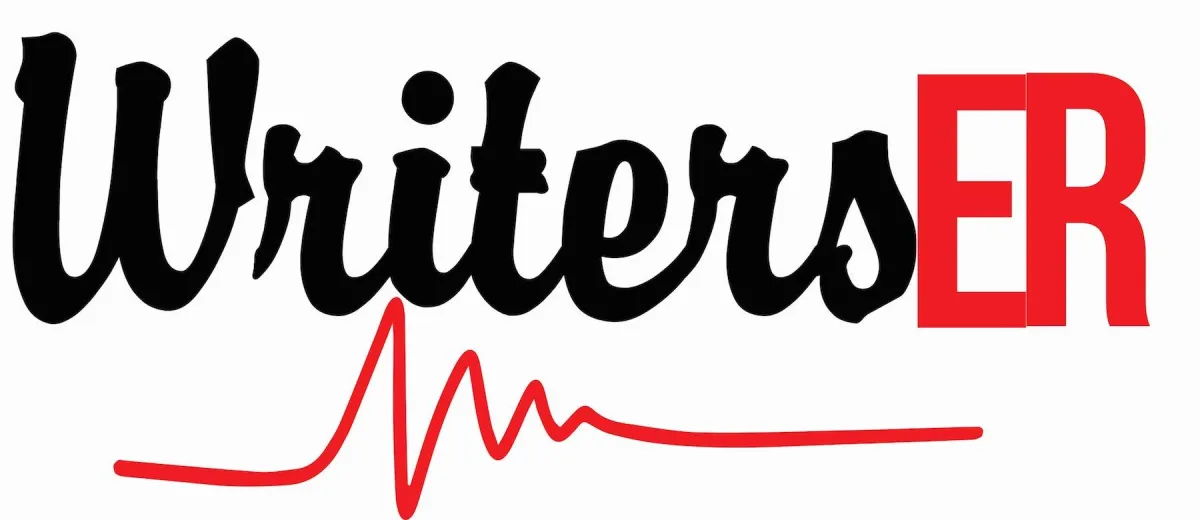Want to Get your Dissertation Accepted?
Discover how we've helped doctoral students complete their dissertations and advance their academic careers!

Join 200+ Graduated Students

Get Your Dissertation Accepted On Your Next Submission
Get customized coaching for:.
- Crafting your proposal,
- Collecting and analyzing your data, or
- Preparing your defense.
Trapped in dissertation revisions?

- Code of Ethics
- Dissertation Editing
- Dissertation Coaching
- Free Consultation
Dissertation Chapters: A Guide to Writing Your Dissertation
Embarking on your dissertation is equal parts exhilaration and trepidation. It’s finally your turn to stake out your territory in the body of knowledge and hone your expertise. Naturally, it’s a lot of work, the evidence of which is reflected in your dissertation chapters. These chapters, which comprise the bulk of your dissertation, offer a clear snapshot of your topic, the work that has already been done by other scholars in your field, gaps in the literature, complications, your approach, and more.
There are many moving parts to a dissertation, and the best way to simplify them is by chapter. Each chapter follows certain rules and serves a specific purpose. The most efficient way to break down the work ahead of you into pieces is to understand the role each chapter plays in the dissertation.
These are frequently asked questions about dissertation chapters.
- How many chapters are in a dissertation?
- What is the content of each dissertation chapter?
- How long is each dissertation chapter?
- How long does it take to write dissertation chapters?
How Many Dissertation Chapters are in a Dissertation?

Usually five. While there are no short answers in academia, five dissertation chapters is the convention across many fields, if not most. Five dissertation chapters is a safe bet. As always, though, do your homework and find out exactly what the expectations are for dissertations in your department.
Read (skim) dissertations written by recent graduates from your department to determine norms for chapter length and the extensiveness of the critical research they did and the studies they conducted. The average could be anything from 130 pages (math) to 500+ pages (history) –either way, you need to know. Also, visit office hours and talk to a few faculty members in your department. Whether they end up on your dissertation committee or not, their perspective will be helpful.
Content of Each Dissertation Chapter
There is a format for the structure of a dissertation that most fields adhere to, and it is very specific. The first three chapters constitute your dissertation proposal , which must be completed, defended, and approved by your dissertation committee. Once your proposal is successfully defended, you can proceed with the research you will need to do to write the two final chapters.
Dissertation Chapters
- Dissertation Chapter One: Introduction to the Study This chapter includes your problem and purpose statements, research questions, and definitions of key terms examined in your research.
- Dissertation Chapter Two: Literature Review This section is a deep dive of the extant research on your topic, as well as your opportunity to identify and highlight gaps in the literature.
- Dissertation Chapter Three: Research Methods This chapter offers a summary of how you propose to collect data and your methods of analysis.
- Dissertation Chapter Four: Results In this section, you present your findings and share the results of your study.
- Dissertation Chapter Five: Conclusion The final chapter is an opportunity to offer your analysis of your findings and discuss the implications.

How Long is a Dissertation Chapter?
Dissertation chapter lengths vary, though the number of pages you can expect to write will likely correlate with standard dissertation lengths in your discipline. If you are doing research in a field like anthropology or theology, be prepared to conduct extensive literature reviews and write lengthy chapters. Topics that require a great deal of background information also make the pages add up.
When thinking about the length of your dissertation chapters, also be aware that chapter lengths are not evenly divided. The bulk of your writing happens in the first three chapters, especially if the literature review covers a lot of ground. If you are writing a 130-page dissertation, the dissertation proposal will take up more than half of that space. Results sections can be comparatively short, and many scholars linger in the conclusion chapter because it’s their time to shine and it’s fun to write.
How Long Does It Take to Write Dissertation Chapters?
The amount of time it takes to write a dissertation depends on many factors and can vary greatly depending on the student, the program, and the discipline. This is a great conversation to have with your dissertation advisor, or even the chair of your department if you are still in the early stages of your graduate education. It never hurts to have a rough timeline in mind so you can get organized and plan for the journey ahead.

These elements often determine the amount of time it takes to write dissertation chapters:
Academic Discipline
Some graduate degrees take longer than others, and much of that disparity occurs after coursework is completed. In many arts programs, most of the dissertation is written while coursework is taking place. It’s a different story in the sciences and humanities. In fields like biology and chemistry, issues like lab space and institutional approval must be resolved before a study can even begin, much less be written about, and that can take months. In fields like history, the scholarly research phase is similarly extensive.
University libraries are an academic wonderland, but that doesn’t mean they hold all the answers or everything that you’ll need to get to work on your literature review or background material. Like many burgeoning scholars, I was excited to discover that I would need to travel in order to undertake some archival research for the critical introduction to my dissertation. However, the time required to set this up and visit the sites extended the amount of time it took to write these dissertation chapters.
Life has a sneaky way of persisting, even when you have a dissertation to write. Many scholars experience unavoidable stops and starts while writing their dissertations, and it’s important to make allowances for being human, even if it interferes with your writing schedule. In my experience, we do our best to write as quickly as possible, but there are inevitable hiccups along the way. No matter. Course correct and keep going. You can do this, and the rewards of having a completed, bound dissertation in your hands will make all the effort worthwhile.
Related posts:

Courtney Watson, Ph.D.
Courtney Watson, Ph.D. is an Associate Professor of English at Radford University Carilion, in Roanoke, Virginia. Her areas of expertise include undergraduate and graduate curriculum development for writing courses in the health sciences and American literature with a focus on literary travel, tourism, and heritage economies. Her writing and academic scholarship has been widely published in places that include Studies in American Culture , Dialogue , and The Virginia Quarterly Review . Her research on the integration of humanities into STEM education will be published by Routledge in an upcoming collection. Dr. Watson has also been nominated by the State Council for Higher Education of Virginia’s Outstanding Faculty Rising Star Award, and she is a past winner of the National Society of Arts & Letters Regional Short Story Prize, as well as institutional awards for scholarly research and excellence in teaching. Throughout her career in higher education, Dr. Watson has served in faculty governance and administration as a frequent committee chair and program chair. As a higher education consultant, she has served as a subject matter expert, an evaluator, and a contributor to white papers exploring program development, enrollment research, and educational mergers and acquisitions.
Comments are closed.

Breaking Down the Dissertation Chapters: A Guide for Graduate Students
Introduction.
Writing a dissertation is a significant academic milestone, and understanding its structure is key to creating a strong and cohesive document. Each chapter serves a specific purpose and contributes to the overall argument and analysis of your research. This guide will help you navigate the essential components of a dissertation, providing insights and tips for tackling each chapter with confidence.

1. Introduction Chapter: Setting the Stage
The introduction is the foundation of your dissertation. It presents the research problem, outlines the study’s significance, and provides a roadmap for what’s to come.
Key Elements of the Introduction:
Background Information: Provide context and explain why your topic is important.
Research Problem: Clearly articulate the issue your study addresses.
Objectives and Research Questions: Define what you aim to achieve and the questions guiding your research.
Structure of the Dissertation: Briefly describe the contents of each chapter.
Tip: Write the introduction after drafting other chapters to ensure alignment with the entire dissertation.
2. Literature Review Chapter: Building Context
The literature review situates your research within the existing body of knowledge. It demonstrates your understanding of the field and highlights gaps your study will address.
Key Elements of the Literature Review:
Identify Major Themes: Group studies by recurring themes or perspectives.
Critically Analyze Studies: Evaluate strengths, weaknesses, and methodologies.
Highlight Gaps: Explain how your research will contribute to the field by addressing unanswered questions.
Tip: Use a reference management tool like Zotero or EndNote to keep track of sources.
3. Methodology Chapter: Explaining Your Approach
The methodology chapter outlines the methods and techniques you used to conduct your research. This section establishes the validity and reliability of your study.
Key Elements of the Methodology:
Research Design: Specify whether your study uses qualitative, quantitative, or mixed methods.
Data Collection: Detail how you collected data, such as through surveys, interviews, or experiments.
Data Analysis: Explain the tools or techniques used to analyze your data.
Ethical Considerations: Address how you ensured participant confidentiality and consent.
Tip: Be detailed but concise. Another researcher should be able to replicate your study based on your methodology.
4. Results Chapter: Presenting Your Findings
In the results chapter, you present the outcomes of your research without interpreting them. This chapter is data-driven and focuses on factual reporting.
Present Data Clearly: Use tables, graphs, or charts to organize findings.
Stick to the Facts: Avoid discussing implications or interpretations here.
Organize by Research Questions: Link results back to your research objectives.
Tip: Label visuals clearly and provide descriptive captions for easy comprehension.
5. Discussion Chapter: Interpreting the Results
The discussion chapter is where you analyze and interpret your findings. Connect your results to your research questions and the existing literature.
Analyze Results: Explain what your findings mean and how they answer your research questions.
Compare with Literature: Discuss how your results align with or differ from previous studies.
Address Limitations: Acknowledge any challenges or constraints in your study.
Suggest Implications: Highlight the practical or theoretical significance of your findings.
Tip: Ensure your discussion provides a balanced interpretation of results, considering both positive and negative outcomes.
6. Conclusion Chapter: Wrapping It All Up
The conclusion ties everything together, summarizing your key findings and their significance. It also offers recommendations for future research.
Restate Objectives: Summarize how your study addressed its goals.
Highlight Contributions: Emphasize the value of your research.
Offer Recommendations: Suggest areas for further exploration.
Tip: Keep this section concise and focused on the big picture of your research contributions.
Conclusion: Building a Cohesive Dissertation
Understanding the purpose of each dissertation chapter allows you to approach the writing process strategically. By breaking down the chapters into manageable components, you can ensure that each section builds upon the other, creating a cohesive and impactful dissertation.
Need guidance with your dissertation chapters? WritersER offers personalized coaching to help you navigate every stage of your dissertation. Click here to get started!

Work With Us
Private Coaching
Done-For-You
Short Courses
Client Reviews
Free Resources
Dissertation Structure & Layout 101

In this post, we’ll be discussing a traditional dissertation/thesis structure and layout, which is generally used for social science research across universities, whether in the US, UK, Europe or Australia. However, some universities may have small variations on this structure (extra chapters, merged chapters, slightly different ordering, etc).
So, always check with your university if they have a prescribed structure or layout that they expect you to work with. If not, it’s safe to assume the structure we’ll discuss here is suitable. And even if they do have a prescribed structure, you’ll still get value from this post as we’ll explain the core contents of each section.
Overview: S tructuring a dissertation or thesis
- Acknowledgements page
- Abstract (or executive summary)
- Table of contents , list of figures and tables
- Chapter 1: Introduction
- Chapter 2: Literature review
- Chapter 3: Methodology
- Chapter 4: Results
- Chapter 5: Discussion
- Chapter 6: Conclusion
- Reference list
As I mentioned, some universities will have slight variations on this structure. For example, they want an additional “personal reflection chapter”, or they might prefer the results and discussion chapter to be merged into one. Regardless, the overarching flow will always be the same, as this flow reflects the research process , which we discussed here – i.e.:
- The introduction chapter presents the core research question and aims .
- The literature review chapter assesses what the current research says about this question.
- The methodology, results and discussion chapters go about undertaking new research about this question.
- The conclusion chapter (attempts to) answer the core research question .
In other words, the dissertation structure and layout reflect the research process of asking a well-defined question(s), investigating, and then answering the question – see below.

To restate that – the structure and layout of a dissertation reflect the flow of the overall research process . This is essential to understand, as each chapter will make a lot more sense if you “get” this concept. If you’re not familiar with the research process, read this post before going further.
Right. Now that we’ve covered the big picture, let’s dive a little deeper into the details of each section and chapter. Oh and by the way, you can also grab our free dissertation/thesis template here to help speed things up.
The title page of your dissertation is the very first impression the marker will get of your work, so it pays to invest some time thinking about your title. But what makes for a good title? A strong title needs to be 3 things:
- Succinct (not overly lengthy or verbose)
- Specific (not vague or ambiguous)
- Representative of the research you’re undertaking (clearly linked to your research questions)
Typically, a good title includes mention of the following:
- The broader area of the research (i.e. the overarching topic)
- The specific focus of your research (i.e. your specific context)
- Indication of research design (e.g. quantitative , qualitative , or mixed methods ).
For example:
A quantitative investigation [research design] into the antecedents of organisational trust [broader area] in the UK retail forex trading market [specific context/area of focus].
Again, some universities may have specific requirements regarding the format and structure of the title, so it’s worth double-checking expectations with your institution (if there’s no mention in the brief or study material).

Acknowledgements
This page provides you with an opportunity to say thank you to those who helped you along your research journey. Generally, it’s optional (and won’t count towards your marks), but it is academic best practice to include this.
So, who do you say thanks to? Well, there’s no prescribed requirements, but it’s common to mention the following people:
- Your dissertation supervisor or committee.
- Any professors, lecturers or academics that helped you understand the topic or methodologies.
- Any tutors, mentors or advisors.
- Your family and friends, especially spouse (for adult learners studying part-time).
There’s no need for lengthy rambling. Just state who you’re thankful to and for what (e.g. thank you to my supervisor, John Doe, for his endless patience and attentiveness) – be sincere. In terms of length, you should keep this to a page or less.
Abstract or executive summary
The dissertation abstract (or executive summary for some degrees) serves to provide the first-time reader (and marker or moderator) with a big-picture view of your research project. It should give them an understanding of the key insights and findings from the research, without them needing to read the rest of the report – in other words, it should be able to stand alone .
For it to stand alone, your abstract should cover the following key points (at a minimum):
- Your research questions and aims – what key question(s) did your research aim to answer?
- Your methodology – how did you go about investigating the topic and finding answers to your research question(s)?
- Your findings – following your own research, what did do you discover?
- Your conclusions – based on your findings, what conclusions did you draw? What answers did you find to your research question(s)?
So, in much the same way the dissertation structure mimics the research process, your abstract or executive summary should reflect the research process, from the initial stage of asking the original question to the final stage of answering that question.
In practical terms, it’s a good idea to write this section up last , once all your core chapters are complete. Otherwise, you’ll end up writing and rewriting this section multiple times (just wasting time). For a step by step guide on how to write a strong executive summary, check out this post .
Need a helping hand?
Table of contents
This section is straightforward. You’ll typically present your table of contents (TOC) first, followed by the two lists – figures and tables. I recommend that you use Microsoft Word’s automatic table of contents generator to generate your TOC. If you’re not familiar with this functionality, the video below explains it simply:
If you find that your table of contents is overly lengthy, consider removing one level of depth. Oftentimes, this can be done without detracting from the usefulness of the TOC.
Right, now that the “admin” sections are out of the way, its time to move on to your core chapters. These chapters are the heart of your dissertation and are where you’ll earn the marks. The first chapter is the introduction chapter – as you would expect, this is the time to introduce your research…
It’s important to understand that even though you’ve provided an overview of your research in your abstract, your introduction needs to be written as if the reader has not read that (remember, the abstract is essentially a standalone document). So, your introduction chapter needs to start from the very beginning, and should address the following questions:
- What will you be investigating (in plain-language, big picture-level)?
- Why is that worth investigating? How is it important to academia or business? How is it sufficiently original?
- What are your research aims and research question(s)? Note that the research questions can sometimes be presented at the end of the literature review (next chapter).
- What is the scope of your study? In other words, what will and won’t you cover ?
- How will you approach your research? In other words, what methodology will you adopt?
- How will you structure your dissertation? What are the core chapters and what will you do in each of them?
These are just the bare basic requirements for your intro chapter. Some universities will want additional bells and whistles in the intro chapter, so be sure to carefully read your brief or consult your research supervisor.
If done right, your introduction chapter will set a clear direction for the rest of your dissertation. Specifically, it will make it clear to the reader (and marker) exactly what you’ll be investigating, why that’s important, and how you’ll be going about the investigation. Conversely, if your introduction chapter leaves a first-time reader wondering what exactly you’ll be researching, you’ve still got some work to do.
Now that you’ve set a clear direction with your introduction chapter, the next step is the literature review . In this section, you will analyse the existing research (typically academic journal articles and high-quality industry publications), with a view to understanding the following questions:
- What does the literature currently say about the topic you’re investigating?
- Is the literature lacking or well established? Is it divided or in disagreement?
- How does your research fit into the bigger picture?
- How does your research contribute something original?
- How does the methodology of previous studies help you develop your own?
Depending on the nature of your study, you may also present a conceptual framework towards the end of your literature review, which you will then test in your actual research.
Again, some universities will want you to focus on some of these areas more than others, some will have additional or fewer requirements, and so on. Therefore, as always, its important to review your brief and/or discuss with your supervisor, so that you know exactly what’s expected of your literature review chapter.

Now that you’ve investigated the current state of knowledge in your literature review chapter and are familiar with the existing key theories, models and frameworks, its time to design your own research. Enter the methodology chapter – the most “science-ey” of the chapters…
In this chapter, you need to address two critical questions:
- Exactly HOW will you carry out your research (i.e. what is your intended research design)?
- Exactly WHY have you chosen to do things this way (i.e. how do you justify your design)?
Remember, the dissertation part of your degree is first and foremost about developing and demonstrating research skills . Therefore, the markers want to see that you know which methods to use, can clearly articulate why you’ve chosen then, and know how to deploy them effectively.
Importantly, this chapter requires detail – don’t hold back on the specifics. State exactly what you’ll be doing, with who, when, for how long, etc. Moreover, for every design choice you make, make sure you justify it.
In practice, you will likely end up coming back to this chapter once you’ve undertaken all your data collection and analysis, and revise it based on changes you made during the analysis phase. This is perfectly fine. Its natural for you to add an additional analysis technique, scrap an old one, etc based on where your data lead you. Of course, I’m talking about small changes here – not a fundamental switch from qualitative to quantitative, which will likely send your supervisor in a spin!
You’ve now collected your data and undertaken your analysis, whether qualitative, quantitative or mixed methods. In this chapter, you’ll present the raw results of your analysis . For example, in the case of a quant study, you’ll present the demographic data, descriptive statistics, inferential statistics , etc.
Typically, Chapter 4 is simply a presentation and description of the data, not a discussion of the meaning of the data. In other words, it’s descriptive, rather than analytical – the meaning is discussed in Chapter 5. However, some universities will want you to combine chapters 4 and 5, so that you both present and interpret the meaning of the data at the same time. Check with your institution what their preference is.
Now that you’ve presented the data analysis results, its time to interpret and analyse them. In other words, its time to discuss what they mean, especially in relation to your research question(s).
What you discuss here will depend largely on your chosen methodology. For example, if you’ve gone the quantitative route, you might discuss the relationships between variables . If you’ve gone the qualitative route, you might discuss key themes and the meanings thereof. It all depends on what your research design choices were.
Most importantly, you need to discuss your results in relation to your research questions and aims, as well as the existing literature. What do the results tell you about your research questions? Are they aligned with the existing research or at odds? If so, why might this be? Dig deep into your findings and explain what the findings suggest, in plain English.
The final chapter – you’ve made it! Now that you’ve discussed your interpretation of the results, its time to bring it back to the beginning with the conclusion chapter . In other words, its time to (attempt to) answer your original research question s (from way back in chapter 1). Clearly state what your conclusions are in terms of your research questions. This might feel a bit repetitive, as you would have touched on this in the previous chapter, but its important to bring the discussion full circle and explicitly state your answer(s) to the research question(s).

Next, you’ll typically discuss the implications of your findings . In other words, you’ve answered your research questions – but what does this mean for the real world (or even for academia)? What should now be done differently, given the new insight you’ve generated?
Lastly, you should discuss the limitations of your research, as well as what this means for future research in the area. No study is perfect, especially not a Masters-level. Discuss the shortcomings of your research. Perhaps your methodology was limited, perhaps your sample size was small or not representative, etc, etc. Don’t be afraid to critique your work – the markers want to see that you can identify the limitations of your work. This is a strength, not a weakness. Be brutal!
This marks the end of your core chapters – woohoo! From here on out, it’s pretty smooth sailing.
The reference list is straightforward. It should contain a list of all resources cited in your dissertation, in the required format, e.g. APA , Harvard, etc.
It’s essential that you use reference management software for your dissertation. Do NOT try handle your referencing manually – its far too error prone. On a reference list of multiple pages, you’re going to make mistake. To this end, I suggest considering either Mendeley or Zotero. Both are free and provide a very straightforward interface to ensure that your referencing is 100% on point. I’ve included a simple how-to video for the Mendeley software (my personal favourite) below:
Some universities may ask you to include a bibliography, as opposed to a reference list. These two things are not the same . A bibliography is similar to a reference list, except that it also includes resources which informed your thinking but were not directly cited in your dissertation. So, double-check your brief and make sure you use the right one.
The very last piece of the puzzle is the appendix or set of appendices. This is where you’ll include any supporting data and evidence. Importantly, supporting is the keyword here.
Your appendices should provide additional “nice to know”, depth-adding information, which is not critical to the core analysis. Appendices should not be used as a way to cut down word count (see this post which covers how to reduce word count ). In other words, don’t place content that is critical to the core analysis here, just to save word count. You will not earn marks on any content in the appendices, so don’t try to play the system!
Time to recap…
And there you have it – the traditional dissertation structure and layout, from A-Z. To recap, the core structure for a dissertation or thesis is (typically) as follows:
- Acknowledgments page
Most importantly, the core chapters should reflect the research process (asking, investigating and answering your research question). Moreover, the research question(s) should form the golden thread throughout your dissertation structure. Everything should revolve around the research questions, and as you’ve seen, they should form both the start point (i.e. introduction chapter) and the endpoint (i.e. conclusion chapter).
I hope this post has provided you with clarity about the traditional dissertation/thesis structure and layout. If you have any questions or comments, please leave a comment below, or feel free to get in touch with us. Also, be sure to check out the rest of the Grad Coach Blog .

You Might Also Like:


How To Choose A Tutor For Your Dissertation
Hiring the right tutor for your dissertation or thesis can make the difference between passing and failing. Here’s what you need to consider.

5 Signs You Need A Dissertation Helper
Discover the 5 signs that suggest you need a dissertation helper to get unstuck, finish your degree and get your life back.

Writing A Dissertation While Working: A How-To Guide
Struggling to balance your dissertation with a full-time job and family? Learn practical strategies to achieve success.

How To Review & Understand Academic Literature Quickly
Learn how to fast-track your literature review by reading with intention and clarity. Dr E and Amy Murdock explain how.

Dissertation Writing Services: Far Worse Than You Think
Thinking about using a dissertation or thesis writing service? You might want to reconsider that move. Here’s what you need to know.
📄 FREE TEMPLATES
Research Topic Ideation
Proposal Writing
Literature Review
Methodology & Analysis
Academic Writing
Referencing & Citing
Apps, Tools & Tricks
The Grad Coach Podcast
36 Comments
many thanks i found it very useful
Glad to hear that, Arun. Good luck writing your dissertation.
Such clear practical logical advice. I very much needed to read this to keep me focused in stead of fretting.. Perfect now ready to start my research!
what about scientific fields like computer or engineering thesis what is the difference in the structure? thank you very much
Thanks so much this helped me a lot!
Very helpful and accessible. What I like most is how practical the advice is along with helpful tools/ links.
Thanks Ade!
Thank you so much sir.. It was really helpful..
You’re welcome!
Hi! How many words maximum should contain the abstract?
Thank you so much 😊 Find this at the right moment
You’re most welcome. Good luck with your dissertation.
best ever benefit i got on right time thank you
Many times Clarity and vision of destination of dissertation is what makes the difference between good ,average and great researchers the same way a great automobile driver is fast with clarity of address and Clear weather conditions .
I guess Great researcher = great ideas + knowledge + great and fast data collection and modeling + great writing + high clarity on all these
You have given immense clarity from start to end.
Morning. Where will I write the definitions of what I’m referring to in my report?
Thank you so much Derek, I was almost lost! Thanks a tonnnn! Have a great day!
Thanks ! so concise and valuable
This was very helpful. Clear and concise. I know exactly what to do now.
Thank you for allowing me to go through briefly. I hope to find time to continue.
Really useful to me. Thanks a thousand times
Very interesting! It will definitely set me and many more for success. highly recommended.
Thank you soo much sir, for the opportunity to express my skills
Usefull, thanks a lot. Really clear
Very nice and easy to understand. Thank you .
That was incredibly useful. Thanks Grad Coach Crew!
My stress level just dropped at least 15 points after watching this. Just starting my thesis for my grad program and I feel a lot more capable now! Thanks for such a clear and helpful video, Emma and the GradCoach team!
Do we need to mention the number of words the dissertation contains in the main document?
It depends on your university’s requirements, so it would be best to check with them 🙂
Such a helpful post to help me get started with structuring my masters dissertation, thank you!
Great video; I appreciate that helpful information
It is so necessary or avital course
This blog is very informative for my research. Thank you
Doctoral students are required to fill out the National Research Council’s Survey of Earned Doctorates
wow this is an amazing gain in my life
This is so good
How can i arrange my specific objectives in my dissertation?
Trackbacks/Pingbacks
- What Is A Literature Review (In A Dissertation Or Thesis) - Grad Coach - […] is to write the actual literature review chapter (this is usually the second chapter in a typical dissertation or…
Submit a Comment Cancel reply
Your email address will not be published. Required fields are marked *
Save my name, email, and website in this browser for the next time I comment.
Submit Comment
- Print Friendly
Dissertations: Writing Chapters
- Choosing a topic
- Research Proposal
- Reviewing the literature
- Introductions & Conclusions
Writing Chapters
- Wrapping Up
- Abstracts & Summaries
- Managing Expectations
As part of your dissertation you will find that you need to write different types of chapters. In this guide we take you through those types, how to structure them. how to write them and some dos and dont's. Click on the links below to jump to the section you need.
- Writing a methodology chapter
Writing a results chapter
- Writing a discussion chapter
Writing a Methodology Chapter
What is a dissertation methodology.
- Structuring your methodology
- Dos and don’ts
A well-written methodology chapter is essential in establishing the credibility and validity of your research, as it allows other researchers to reproduce your study and build upon your findings . In this guide, we will provide you with step-by-step instructions on how to write a comprehensive and well-organized methodology chapter that will effectively communicate the methodology you used in your research.
- The methodology explains your methodological approach and explains what you did and how , and why .
- The methodology section allows the reader to critically evaluate a study's overall credibility .
- The purpose is to give another researcher enough information to replicate the study and obtain similar results.
- Methods and methodology are not synonyms (overarching approach vs specific tools and procedures used to collect and analyse data).
The methodology chapter, as any other chapters of your dissertation except the introduction and conclusion chapters, consists of 3 main sections: introduction, main body and conclusion/summary.
[Adapted from: Succeeding with your Master’s Dissertation: A step-by-step handbook ]
The sections included in the main body depend on the type of research and the type of dissertation. For example:
- In the traditional dissertation , it is commonly a separate chapter preceding the Results chapter.
- In topic-based dissertations , the Methodology chapter might have a different title such as ‘Conducting Research’.
- In experiment-based or dissertations by compilation , each study or experiment might contain its own methodology or methods section.
Step 1: Explain your research design/approach
This commonly includes a restatement of the research aim(s) , a justification of choice of research methods , overview of specific method(s) used .
Step 2: Explain your methods of data collection
This involves explaining how the research was conducted and how the data were obtained . It requires a detailed description of processes and procedures and a justification of the reasons for doing so . This might include describing:
- How was the data collection tool designed
- How participants were obtained and how was the sample drawn
- The location in which the data collection took place
- The themes covered during the data collection or any variables and measures
- Any piloting, adjustments made and reasons behind those
- Ethical considerations and any obstacles faced and how those were addressed
Step 3: Explain your methods of data analysis
This involves explaining how you processed and analysed the data. However, do not start discussing the results unless you are combining results and discussion into one chapter (commonly seen in qualitative research). For example, you might want to include:
- How you prepared the data before analysis (e.g., checking for missing data, removing outliers)
- The software used to analyse the data (e.g., SPSS, Atlas.ti)
- The methods used to analyse the data (e.g., regression analysis, thematic analysis)
[Adapted from: https://www.scribbr.co.uk/thesis-dissertation/methodology/ AND Thesis and Dissertation Writing in a Second Language: A Handbook for Students and their Supervisors ]
For more information on language used in methodology chapters have a look at our page Language used in dissertations .
Writing a Results Chapter
- What is a results chapter?
- Structuring your results
- Presenting your results
- Using tables & figures
The results chapter is a crucial section of any piece of research, as it presents and interprets the findings obtained from the study. This chapter allows you to communicate the outcomes of your investigation, analyse the data, and draw meaningful conclusions . Crafting an effective results chapter requires careful planning, organization, and attention to detail. This guide aims to provide you with a step-by-step approach to writing a results chapter that effectively communicates your research findings.
- The results section of your dissertation is where you report the findings of your study based upon the information gathered as a result of the methodology you applied.
- The results section should simply state the findings , without bias or interpretation, and arranged in a logical sequence .
- The results section should always be written in the past tense .
- The page length of this section is set by the amount and types of data to be reported. Try to be concise and use non-textual elements .
- Avoid providing data that is not critical to answering the research question(s).
The results chapter, as any other chapters of your dissertation except the introduction and conclusion chapters, consists of 3 main sections: introduction, main body and conclusion/summary.
Introduction
This might include:
- A brief reminder of the methodological approach or methods.
- A preview of the chapter: outline the organisation and state the scope (What is included? How is the chapter organised?)
The order of results can vary. Some suggestions are:
- From most important to least important.
- As a logical response to the research questions or problems you are trying to answer or solve.
- If you are using a range of methods or a number of experimental elements , group the method/procedure together with the relevant results.
- In quantitative research , the descriptive statistics are generally presented first, then the results of each of the hypotheses or research questions that were tested.
- The information in the results section should be organised to show how the data tests the research questions or hypotheses , and should be presented sequentially to respond to each research question or hypothesis.
Conclusion or Chapter Summary
- A brief summary of the key results.
- Signpost how these will be discussed in the following chapter (leads to your discussion chapter).
Describe the findings of the study, but do not start to interpret the results . This will take place in the discussion section, which comes next, unless you decide to combine results and discussion, which is common in qualitative research.
Presenting Qualitative Results
- Structure your results around key themes .
- For each theme, make general observations about what the data showed.
- Support these points with direct quotations .
- If possible, include a brief conclusion (‘so what?’) to the observation and highlight any links with other findings.
- Repeat this process as many times as necessary.
- Further information can be included in an appendix .
Presenting Quantitative Results
- Structure your results around your research sub-questions .
- For each sub-question, present the relevant results , including any statistical analysis you conducted, and briefly evaluate their significance.
- Highlight the most important trends , differences, and relationships among the data, but do not speculate on their meaning or consequences.
- If you have results that are not directly relevant to answering your questions, or any extra information that will help the reader understand how you gathered the data, you can include them in an appendix .
The description of tables and figures in academic written texts commonly includes two different elements:
- Location or summary statement: identifies the table or figure and indicates its content.
- Highlighting statement or statements: point out and describe the relevant or significant data.
Dos and don'ts of using tables and figures
For more information on the language used in results chapters see the Language section of this guide.
You can use the checklist below to ensure your results chapter includes all relevant information:
Writing a Discussion Chapter
What is a discussion chapter.
- Structuring your discussion
- Dos and don'ts
The discussion chapter of a dissertation is an essential component that showcases your ability to analyse and interpret your research findings, draw meaningful conclusions, and provide valuable insights into the broader academic and practical implications of your study. This guide aims to provide you with a comprehensive overview of how to write a compelling and well-structured discussion chapter that strengthens the overall impact of your dissertation.
- Explains what the results mean;
- Interprets and discusses the data;
- Compares it with other research (literature review);
- Evaluates its importance;
- Points out the limitations of your research;
- Raises questions for future directions .
Tip: When writing your discussion chapter, you might want to revisit your literature review chapter and ensure that the relevant literature included in this chapter has been already presented in the Literature Review.
The discussion chapter, as any other chapters of your dissertation except the introduction and conclusion chapters, consists of 3 main sections: introduction, main body and conclusion/summary.
[Adapted from: Succeeding with your Master’s Dissertation: A step-by-step handbook ]
Your discussion should focus on explaining and evaluating your findings, displaying their connection to the previous literature (i.e., your literature review ) and research questions , as well as presenting a persuasive argument to support your overall conclusion. While there are many different ways to write this section, you can focus your discussion around three key aspects:
- Interpretations: What is the meaning behind the results?
- Implications: Why do the results matter? Why are the results relevant?
- Limitations: What can’t the results tell us? What are the constraints or limitations of the results in terms of what they can reveal?
This can be done following the 5 steps below:
Step 1: Summarise your findings
You can begin this section by reiterating your research problem and providing a succinct overview of your main findings. Do not just repeat all the data that you have already reported in the previous chapter, instead present a clear statement that directly addresses your research questions.
Step 2: Interpret your findings
While the significance of your results may appear apparent to you, it is crucial to explicitly articulate their importance for your reader by demonstrating how they directly address your research question. The manner in which you interpret the data will vary depending on the type of research conducted. However, some common approaches to interpreting the data include:
- Recognizing correlations, patterns, and relationships within the data
- Analysing whether the results align with your expectations or support your hypotheses
- Placing your findings within the context of prior research and established theories
- Elucidating unexpected results and assessing their significance
- Considering alternative explanations and presenting a compelling argument in favour of your position.
Step 3: Place your findings in context (literature review)
A helpful way to place your findings within context and identifying how your findings agree or disagree with the previous literature is to use a summary table such as the one below:
This can result in a paragraph like: The importance of timely feedback in block has also been stressed by students and faculty as one of the reasons as to why single assessments at the end of the module, and more specifically exams, are the least accurate method in block delivery. Although exams were considered by some participants as necessary in certain disciplines, participants agreed that this assessment type does not show knowledge depth as indicated by Dang et al. (2022) and students might receive limited or no feedback as highlighted by Race (2015). Therefore, incorporating frequent and a variety of assessments with timely feedback into block delivery could enhance student learning outcomes and improve the accuracy of assessments.
Step 4: Acknowledge the limitations
Every piece of research has limitations and acknowledging these is crucial for establishing the credibility of the study. The purpose of discussing these limitations is not to highlight errors, but rather to provide an accurate understanding of the conclusions that can and cannot be drawn from the study, as well as to highlight further areas for research on the topic. Limitations might relate to your research design, methodological choices, or unforeseen challenges encountered during the research process. Here are some examples:
- If the sample size was small or limited to a specific group of individuals, it is necessary to explain how the generalizability of the findings is constrained.
- If difficulties were encountered during data collection or analysis, it is important to elucidate how these challenges might have impacted the results.
- If there are potential confounding variables that could not be controlled, it is essential to acknowledge the potential effects they might have had.
[Adapted from: https://www.scribbr.co.uk/thesis-dissertation/discussion/ ]
For more information on the language used in discussions, have a look at our Language used in dissertations guide
Further Reading
Journal of Suffolk Student Research
The Journal of Suffolk Student Research is an online academic journal, dedicated to the publication of high-quality undergraduate and postgraduate student research undertaken by University of Suffolk students. The journal will showcase the most outstanding student research undertaken at the University of Suffolk. It aims to promote and recognise this outstanding student research by offering valuable early experience of academic publishing and the peer review process.
Find out more here
- << Previous: Introductions & Conclusions
- Next: Wrapping Up >>
- Last Updated: Feb 1, 2024 4:22 PM
- URL: https://libguides.uos.ac.uk/dissertations
➔ About the Library
➔ Meet the Team
➔ Customer Service Charter
➔ Library Policies & Regulations
➔ Privacy & Data Protection
Essential Links
➔ A-Z of eResources
➔ Frequently Asked Questions
➔Discover the Library
➔Referencing Help
➔ Print & Copy Services
➔ Service Updates
Library & Learning Services, University of Suffolk, Library Building, Long Street, Ipswich, IP4 1QJ
✉ Email Us: [email protected]
✆ Call Us: +44 (0)1473 3 38700

IMAGES
VIDEO
COMMENTS
Dissertation OverviewThe traditional dissertation is organized into 5 chapters and includes the following elements and pages:Title page (aka cover page) Signature ...
The first three chapters constitute your dissertation proposal, which must be completed, defended, and approved by your dissertation committee. Once your proposal is successfully defended, you can proceed with the research you will need to do to write the two final chapters. ... Dissertation Chapter Three: Research Methods This chapter offers a ...
Conclusion: Building a Cohesive Dissertation. Understanding the purpose of each dissertation chapter allows you to approach the writing process strategically. By breaking down the chapters into manageable components, you can ensure that each section builds upon the other, creating a cohesive and impactful dissertation.
Dissertation Chapter 1 - 5 Sections Rubric - Version 1 May 1, 2019 APA formatting errors. Verb tense is an important consideration for Chapters 1 through 3. For the proposal, the researcher uses future tense (e.g. "The purpose of this study is to…"), whereas in the dissertation, the chapters are revised to reflect past tense (e.g. "The
While each journey is unique the dissertation consists of three phases. The Proposal Phase consisting of Chapters 1, 2 and 3. IRB/Data Collection and Analysis and then the Dissertation Defense which includes the drafting of Chapters 4 and 5. The focus for this presentation is the proposal phase the drafting of Chapters 1, 2, and 3.
The core chapters (the "meat" of the dissertation) Chapter 1: Introduction; Chapter 2: Literature review; Chapter 3: Methodology; Chapter 4: Results; Chapter 5: Discussion; Chapter 6: Conclusion; Reference list; Appendix; Most importantly, the core chapters should reflect the research process (asking, investigating and answering your ...
The first three chapters of a dissertation are known as the dissertation proposal. The proposal establishes the rationale for conducting the study, including a review and analysis of the relevant literature, and describes the design and methodology that will be used for the study. Students work with their supervisory committee to develop the ...
Chapter 3 Methodology Chapter 4 Results or Findings Chapter 5 Interpretations, Conclusions, and Recommendations References Appendices Dissertation proposals should include the elements normally found in Chapters 1, 2, 3, and the References of a dissertation. Both your proposal and dissertation are major written documents that must convey ...
The results chapter, as any other chapters of your dissertation except the introduction and conclusion chapters, consists of 3 main sections: introduction, main body and conclusion/summary. Introduction. This might include: A brief reminder of the methodological approach or methods.
first three chapters that constituted the former Proposal, especially Chapter 2, Review of Literature. The Dissertation is based on an extensive literature review that relies upon primary sources for an empirical research foundation. Most of the literature added to the Dissertation after Proposal approval will be primary sources.